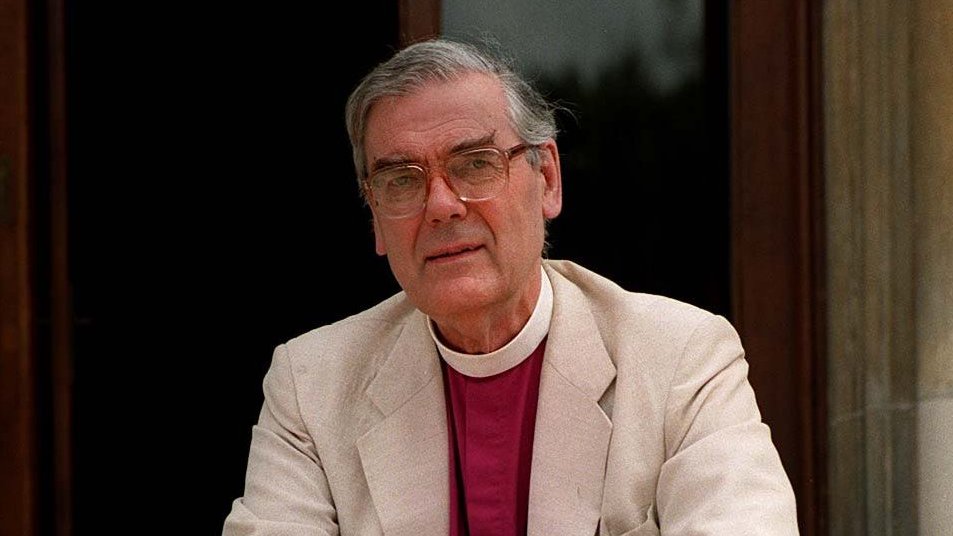I much enjoyed reading an authorised biography of John Habgood written by David Wilbourne. It is an insightful and wise evaluation of the former Archbishop of York. Here is a link to my reflections commending the insights and wisdom of this biographical reflection. https://www.sarum.ac.uk/how-would-you-like-to-be-remembered/
While sorting through some random books for the charity shop, I came across this collection of pieces from John Habgood. It was published in 1993 and entitled Making Sense. He had in 1988 offered a similar collection of addresses and articles in a book entitled confessions of a conservative liberal. These pieces of work belong to a particular place and time in the life of the church. Though written some thirty years ago they stand the test of time. Their fluency and wisdom are key qualities that run through the four carefully organised sections.
Habgood tackles many of the issues facing contemporary society which even now remain persistent and relevant. He explores medical ethics, human rights, war and peace, science, and religious belief, Church and State and inter- faith relations. They are fluent and deep. There is a theological Wisdom to the way in which he notices, processes. reflects and writes. Deeply grounded in the Anglican tradition but open to the questions that the world invites us to consider shapes the process of reflection. There is a liberality and openness to truth which is invitational. In this book is a grounded and informed theology that constantly yields wisdom.
What are the prospects for the Church of England ?
As I write the Church of England continues to be a place of deep disagreement and trauma for those victims of abuse who have not felt heard or supported by systems and communities and leaders. I am bound to ask what kind of theological wisdom and judgement might help us in these torrid and shameful times. As the Church seeks to find a replacement for Justin Welby, it might just be worth reminding ourselves of the charism of Anglicanism. An outward facing liberality and catholicity is so fluently articulated here.
One particular piece caught my attention. It is dated ( delivered as it was to the annual conference of the charted Institute of marketing in November 1990) but amidst its analysis, questions and challenges there is certainly some wisdom for our present time.
Who are we listening to ?
Habgood defines marketing as being concerned with ensuring that the company provides what the customers want to buy. This has, he argues, some validity in relationship to religion. How do we define religious needs ? What is the essence of believing ? To what extent do we believe and show in our lives and communities of faith that there are fundamental human needs which are, in some sense, satisfied by religion? It also follows that we need purpose, identity and a framework within which we can engage with awkward questions. Who am I? What is my life about? How are to make sense of the pandemic ? How are we to understand the shifting landscape of religion especially in the West ?
Put these questions alongside our human need for community and belonging and we see the ways in which we strive to nurture a sense of care and encouragement. Habgood asks us to consider the ways in which we human beings need a challenge. Freedom and agency characterise our human nature. None of us are victims of the present circumstances. All human experience can be taken hold of and transformed. This is the market for our religious motivation and our theologies.
An obvious question here is how far we understand those around us and what their needs might be. How far can any of us make a religious faith adaptable to consumer demand? Do any of us know what we really need and who can meet these needs?
Over the past decade there has emerged a regrettable sense of competitiveness in between various factions of Christian living and practice. We talk of style and choice in worship. We openly talk of successful churches and their branding and ethos and approach to discipleship. Habgood reminds us that there is a limited sense in which it is possible to make a religious faith adaptable to consumer demand without changing its character.
This might give us much to ponder on as we look at the steady and seemingly inexorable decline of commitment to Church over the last century. Habgood names some of the selfish individualism and consumerism that has been set within the culture of the Church of England in its strategic management in recent times. He was wise enough to predict some of our present contradictions and dilemmas.
Learning from Marketing ?
Habgood articulates some of the things that the Church may have to learn from a professional engagement with the nature of marketing and its methodologies.
He invites his reader into considering the product by asking us to consider what Christianity is actually about. He reminds us that religion begins in wonder but also embraces beauty, mystery, holiness and love. It is about the things which cannot be said because they lie too deep for words. This is a vision of Christianity as a way of life which entails believing. It invites us to engage with our world. What do we see around us ? What really matters ? It also entails belonging because it is a social and not just an individual matter. It also entails behaving. We might want to consider what kind of people we are and what we do.
Marketing, the ‘Church of England’ will always be complex because the reality of our identity and practices are not always easily accessible. Our languages and practices can appear to be both inaccessible and irrelevant.
Habgood shows his reader that one of the major selling points of the Church of England is it openness with which it has always displayed towards complexity. It is open to new truth. It has in past times refused to draw over sharp boundaries. It is moderate, practical, homely, suspicious of a certain sort of clericalism, optimistic and not too much dwelling on the fact of sin. There is an embedded pragmatism which is relational and pastoral. It is noticeable that Habgood draw attention to the order, dignity, and beauty of Anglican worship. Of course some of this has led Anglican ministry into a certain kind of self satisfaction, laziness, curriculum and nostalgia.
Understanding our customers ?
This piece of work moves from an analysis of the product to exploring who are customers might be.
First he names the fringe who are interested in the Church of England and have some sympathy with it but have not yet found their way into a regular commitment.
Second Habgood names, customers who are unchurched. He warns his reader not to dismiss this group as he detects a popular religion amongst this group. He expresses his hope that there might be more theological fluency explored within the context of the academy and the media.
Finally, he describes the ‘up market’ – expressing a hope that the church might have a more serious engagement in the intellectual, cultural and political life of the nation.
This reflection ends with some thoughts about methods. He reminds his reader that there is a growing interest in religious communities and the life of contemplation and prayer. He pointed out that the church can often be present at significant moments in peoples lives but that we need to change images and methods of expressing the nature of our core belief. Poetry and Art as they excite and nurture the imagination might be ways in which there might be a recovery in believing along. Habgood quotes Philip Larkin ( Church Going) that the Church is ( and can be) a serious House on a serious Earth.
There is much that is worth pondering here. Habgood shows us how to engage in a different narrative that is not limited by function, anxiety or fatalism. It is a welcome invitation to consider our narratives and methods of engagement.




